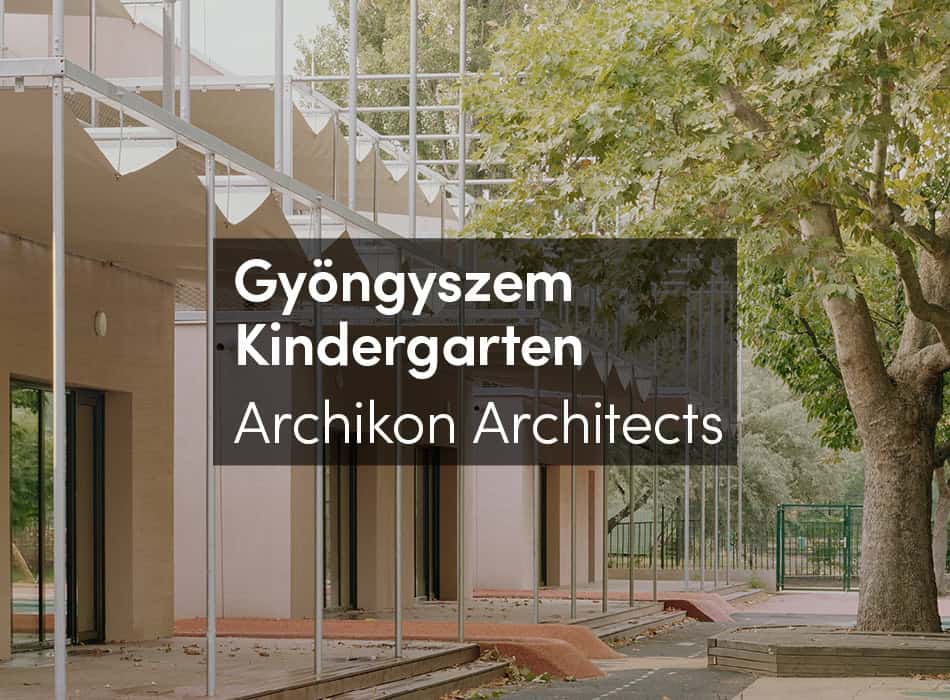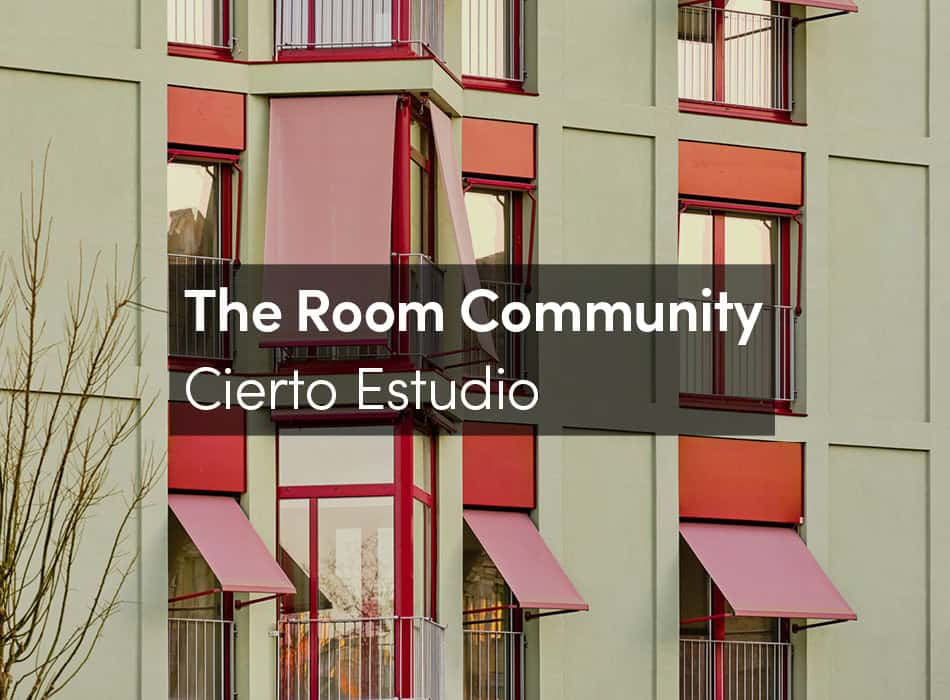Eight members of the Spaces of Commoning research group sit around a large office table. They are organizing a summer school called “Commoning the City” and it is one of their last meetings before the event.[1] They are still undecided on how to organize the provision of food:
A: So, I spoke to the organic food store and they said they could deliver a meal each day including salad for quite a reasonable price.
B: I still like the idea that summer school participants prepare food together. It’s a way of getting to know one another and it could become part of our knowledge production.
C: On paper this sounds great, but if you think about it, there would always be a group spending the whole morning organizing and preparing food. When you think of our dense program, we just don’t have enough time …
D: Have you ever organized collective cooking as part of an event? It eats up all the time and attention and pretty much dominates the entire setting. Do we really want this? We have so many interesting guests coming!
C: And cooking is one thing, but afterward, washing the dishes?
E: Still, I think it would be great if everyone is involved in the reproductive parts of the summer school—it’s part of the issue at stake. If each person attends one shift during the week it could really work. It’s half of a day you would miss.
F: I think C is right, I didn’t think about dishwashing. That’s a hassle. It really puts me off.
A: I can ask if the organic food store can take care of the dishes as well.
I wrote the above dialogue based on my recollections of the numerous meetings of the Spaces of Commoning research group. In June 2014 we organized a summer school and discussed, sometimes at great length, how we would provide food for our fifty guests during those nine days of workshops, discussions, tours, and talks. It’s no surprise that the actual exchanges (in contrast to our many other discussions) were not recorded—usually these issues do not take center stage. We, too, couldn’t help distinguishing between the work of discussing issues and developing ideas on commoning and the city, and the work of meeting the participants’ everyday needs. We understood that practices of commoning and reproductive labor—such as the provision of food—are closely related, but we struggled in tying the immediate and practical questions of the group’s physical needs with our academic and artistic formats of workshops, tours, and talks. Doubtless, unrecorded discussions like this one point to the difficulties we face when trying to overcome an existing order, one that ascribes less value to reproductive tasks than those one can list in a résumé. While we were experimenting with different spatial settings and situations—to introduce ideas of commoning in our working modes during the summer school—the cooking was done outside our venue and by somebody else. So what are the relations between the spaces of commoning and reproductive labor? How do such relations manifest themselves in designs or built spaces? How can one oppose established, spatial orders of productive/reproductive labor? What kinds of spaces are able to support such struggles? And what other power relations are involved in the organization of reproductive commons?
Our struggle to reevaluate and restructure tasks like cooking and cleaning isn’t new. In the 1970s feminist Marxist thinkers and activists like Mariarosa Dalla Costa, Selma James, and Silvia Federici introduced the term reproductive labor to describe the unpaid domestic labor typically carried out by women in private homes. In a still somewhat classical Marxist reading, for them, reproductive labor meant the work of reproducing the waged workforce. In their Wages for Housework campaign, they criticized traditional Marxist concepts for ignoring the significance of domestic labor, and therefore papering over a gendered division of the working class between those who get paid for their work and those who do not. This was possible, they argued, because women’s labor in the private home had been made invisible by the ideology of the family, which framed domestic labor as being in the nature of women.[2] The campaign powerfully revealed the mechanisms of capitalism’s devaluation of reproductive labor. It helped to understand the exploitative and often gendered nature of this labor division—worth keeping in mind today when aiming to establish anti-essentialist perspectives on household labor.[3]
Feminist economists like J. K. Gibson-Graham later argued that the domestic labor debate of the 1970s still adhered to a rather capitalocentric imaginary (as well as epistemology), and missed out on alternative forms within a diverse range of economies not covered by the dichotomies of waged/unwaged, productive/reproductive labor. They recognize the domestic labor debate’s important intervention in setting the unpaid labor of the household in relation to the capitalist wage, but they also detect a certain economic determinism. For them, the idea that household labor solely serves the reproduction of the capitalist labor force “makes it inconceivable at the level of theory to imagine a social dynamic emanating from the household sphere.”[4] Therefore, the relation between capitalist and non-capitalist forms of labor is open, and rather something to be defined. To support this idea, they work within a framework of a diverse economy that acknowledges that capitalist and non-capitalist economies co-exist—that, in fact, capitalist labor relations only make up the tip of the iceberg of our economy.[5] In terms of household labor, they argue, a multiplicity of constellations exist, ranging from exploitative slave and feudal modes to non-exploitative independent (i.e. single) and communal modes. Only the perspective of differentiated household class relations, they think, makes it possible to recognize contingencies in labor relations (capitalist and non-capitalist alike) and to imagine post-capitalist worlds.
As a reaction to the social and economic restructuring that globalization brought about in the 1980s and 90s, Federici, amongst others, abandoned her stance in the Wages for Housework campaign and called for the organization of reproductive commons. The re-territorialization of the international work divide, new enclosures of resources in former colonized countries, destruction of the institutions of the workers movement, and the crumbling of counter movements from the sixties had broken established forms of resistance to capitalist exploitation and made it necessary to rethink a feminist stance on reproductive labor.[6] Expanding her notion of reproductive labor to include subsistence economies and the means of (re)production, she argues that collective forms of reproduction and practices of commoning can enable our independence from wage labor and subordination to capitalist relations.[7] This does not mean, however, that practices of care, maintenance or mutual aid disappear. On the contrary, Federici’s notion of the commons is tightly linked to reproductive labor. In contrast to many other discussions on the commons, which avoid questions of everyday reproduction,[8] she insists (referring to Maria Mies) that “the production of commons requires first a profound transformation in our everyday life, in order to recombine what the social division of labor in capitalism has separated.”[9]
As one of our guests at the “Commoning the City” summer school, Federici concluded our discussion with a related remark reminding us that social movements are only sustainable if they include cooperation and reproduction; only self-reproducing movements are able to establish continuity and thus also agency. This involves taking care of each other and taking responsibility for each other’s lives.
Functionalist Architecture, Kitchens, and Collectivity
Architect Margarete Schütte-Lihotzky, who set the standard of modernist planning in the late 1920s through her work in the New Frankfurt social-housing program, urban researcher Günther Uhlig, and radio journalist Bea Füsser-Novy sit at a garden table. Uhlig and Füsser-Novy interview Schütte-Lihotzky for their documentary film, Das Bauen ist ja nicht das Primäre …:[10]
MSL: Today people think that the functionalist architects believed that once a function is solved, everything is fine. But that’s not how it was. That’s a false impression that I would like to correct. I have known no one who believed that things are automatically beautiful when they function well. One could put it like this: functionalism developed at a break—a break between crafts and a rather advanced industrialization. This brought up tremendous problems and functionalism approached these problems rather bravely. This is what I wanted to say to conclude Frankfurt.
GU: There are some questions—you described it very well, the question is …
MSL: [Knocking on the table] I forgot something—something rather important. We were aware that functionalism—if you need to use such a catchword—we were absolutely aware that this was a transitional stage …
GU: That’s important.
MSL: … at best it was, let’s say, the very first beginning of an architecture of the twentieth and twenty-first century. The very beginning.[11]
The title of the film translates as “Building is not the primary thing …” and the transcript is part of its concluding conversation. There Schütte-Lihotzky tells Uhlig and Füsser-Novy about how she had learned over the course of her career that she and many of her colleagues in the Functionalist movement had been wrong to think that architecture could change people. “It is rather the opposite,” she says. However, whether she wanted it or not, her own designs, and many other Functionalist ideas, have produced long lasting architectural standards that left little of that room for experiment and change Schütte-Lihotzky alludes to in this conversation.
Schütte-Lihotzky is most famous for her 1926 design of the Frankfurt kitchen. A paradigmatic example of functionalist design, it is the standard model for the work kitchen in tenement buildings in Europe for the rest of the twentieth century. The narrow layout of the Frankfurt kitchen was a reaction to constraints in space and cost in the late 1920s New Frankfurt social-housing program. The kitchen, planned as a separate space within the apartment, was not only determined by the dire interwar economics. Schütte-Lihotzky also supported the idea that the household, like the factory or the modern office, should be rationalized. In her opinion, women of all class backgrounds had to be relieved of the heavy burden of domestic labor, and her kitchen design, inspired by the rationalization of industrial production, helped to free them.[12]
Back then, critique of Schütte-Lihotzky’s design focused on the particular workflows it forced on its users. It was only in the 1970s and 1980s that feminists questioned its implications on women’s emancipation. Susan Henderson, for example, argues that Schütte-Lihotzky’s work kitchen tapped into the general feminist backlash that took hold of 1920s Germany and sought to re-domesticate women.[13] Under the aegis of progress and modernization, a largely conservative women’s movement promised emancipation through the professionalization of the housewife. As Henderson explains, their presumption was that “the best social purpose of managerial and technical expertise was to bolster the existing model of the family and woman’s role within it.” [14] The dream of a kitchen machine went well with many architects’ Functionalist ideas and their obsessions with mass production and industrialization. For women though, it meant the kitchen machine would bind them once again to the household and, for decades, spatially manifest the situation the Wages for Housework campaign sought to undo.
Uhlig, who coconducted the interview with Schütte-Lihotzky, found another 1920s kitchen idea that bore the potential for emancipation and alternative forms of living: the Einküchenhaus, which means “one-kitchen building.” The one-kitchen building was a multistory apartment building featuring living units without (or very minimal) cooking facilities. Instead, meals were served to the tenants out of a central kitchen. The housing model was discussed and tested throughout Europe for different reasons: for bourgeois city dwellers, it was a way to save on costs for servants while keeping up their lifestyles, but also to realize reformist ideas of living; for parts of the socialist feminist movement, the model promised independence for women.[15]
Uhlig looks at the rise and fall of the one-kitchen building from the perspective of the late 1970s. Criticizing housing and planning policies of his own time,[16] he argues that standardized mass housing for the nuclear family—inherited from Functionalist planning ideas—dominated building practices and left no room for alternative approaches to the production of living environments. While the idea of the one-kitchen building, like the Frankfurt kitchen, emerged out of the desire for women’s emancipation—or at least to reduce the time spent on household labor—by rationalizing living arrangements, it held more potential for alternatives. This potential, Uhlig argues, lay in its collectivity, and opened the doors to a much wider range in modes of living than modern mass housing would allow for. Its urban typology also further invited heterogeneity into the building.[17]
The demise of the one-kitchen building came about for different reasons: not enough middle-class families were attracted to the idea to make it economically feasible on a large scale. Among feminist socialists, discussions on the one-kitchen building remained stuck in conflict between micro-political reformist ideas (concerning women’s labor) and more sweeping demands for a wholesale revolution. This conflict also appears in discussions about the commons and Gibson-Graham’s idea of the already prevailing non-capitalist economies. Marina Vishmidt, for example, provocatively warns us that ideas focusing so much on communal and bottom-up practices support a perspective “as if the revolution had already occurred.” But often, according to Vishmidt, such a perspective does not pay enough attention to the contradictions of living autonomously within a capitalist system.[18]
Retrospectively, in her conversation with Uhlig and Füsser-Novy, Schütte-Lihotzky thought it necessary to explain that Functionalist architects understood their ideas as transitional and did not intend for them to be frozen as universal building standards, which turned out to be the case. In fact, when she designed the Frankfurt kitchen, Schütte-Lihotzky held the opinion that for the masses of the working class, the one-kitchen building was not affordable, and that architects would do better improving individual kitchens. Both Schütte-Lihotzky’s reflections on her designs and Uhlig’s research show that the possibilities of habitating differently and influencing gender relations through the design of a building are connected to multiple other struggles,[19] such as who can actually afford organizing reproductive labor differently, or arranging life collectively, and how such efforts relate to greater economical and political systems.
In her queer reading of the only one-kitchen building ever realized in Vienna—the Heimhof Einküchenhaus built between 1922 and 1926—Heidrun Aigner observes that for the purpose of women’s liberation, the building was not especially useful.[20] Initiated by one of Vienna’s leading feminist activists of the time, Auguste Fickert, the building was realized to support single or working women. With its central kitchen, laundry facilities, and employees who managed many household tasks, the building had the character of a hotel. Still, the Heimhof Einküchenhaus was not able to subvert the gender relations of housework. Even though they were employed and paid, it was still women in the kitchen, cleaning the apartments, doing laundry. Here, too, housework remained the women’s domain. Nor was the building able to transcend oppressive class relations. Only well-off middle-class women and men could afford to live there; meanwhile, their domestic needs were fulfilled by less affluent women.
Nonetheless, drawing on interviews with witnesses from the project’s early years, Aigner discerns a hint of resistance amid the different co-living constellations the building allowed for. Reports include a great diversity of living models that diverge from the heteronormative model of the nuclear family. They tell about inhabitants appropriating the communal spaces of the building and creating a public situation within the private building that supported and fostered alternative modes of living.[21]
Political Work, Queer Households, Reproductive Commons
Cordula Thym, Dani Baumgartner, Florian Anrather, Jasmin Rilke, all inhabitants of a shared apartment in the Türkis Rosa Lila Villa, and my colleague Mara Verlič and I sit at a round kitchen table. Mara and I have come to ask them about their everyday lives (with a focus on reproductive labor) in the villa. Cordula has prepared homemade dumplings but everyone ensures us that they don’t eat together every day. Türkis Rosa Lila Villa is a self-administered queer cohousing project and community center for gay, lesbian, and trans people. It was founded in 1982 and is still an important address for queer Vienna today:
JW: You are part of the Wohnverein [an association for co-living in the villa]. What kinds of things do you do together? You organize the annual party, you go to the assemblies, and you manage the house together. But what else do you do together as a house collective or a shared apartment that includes political work? Or do you do these things individually?
DB: Well, for example the refugee project—today it is called Queer Base—was initiated by the Wohnverein. Sure, it wasn’t run for long by the Wohnverein—it quickly became too large—but it is cool if projects can grow from here.
FA: If you don’t know about the project—it is about organizing living space for LGBTIQ refugees and asylum seekers. Additionally, many people contribute to Tips (information and counseling center) and through this work, interpersonal alliances can emerge that are project based. There are always different things happening, and different groups of people work together on different projects.
MV: So the project is not only organized by people living in the villa but also by people from outside?
DB: Exactly, by many other people!
MV: And today, the project is not at all connected to the villa?
FA: They founded an independent association, if I remember it right.
CT: But this association is still based at the Villa! We often do things as a reaction to an event or a situation. If something is happening, we organize something together, as a living association, or as people from the house.
Türkis Rosa Lila Villa[22] started out as a gay and lesbian activist and co-housing project. Its beginnings were embedded in an emerging gay and lesbian movement, as well as in Vienna’s squatting scene that opposed rising rents and real estate speculation in the city.[23] Activists squatted an abandoned apartment building owned by the city that was about to be razed. Later they renovated the building and adopted its spaces to house several gay and lesbian shared apartments, a community cafe and a counseling center. Up to today these are the three core elements of the project.
While the founders of Türkis Rosa Lila Villa hoped that theirs would be the first of many gay and lesbian co-housing projects, the villa has remained the only such effort in Vienna for years. [24] This may be one of the reasons the villa is a famous house in Vienna—well known beyond the queer, lesbian and gay scene. Compared to other cohousing projects, even those based in alternative contexts, the combination of political work and the everyday is unique. While being an important space for LGBTIQ activism in Vienna, translating ideas of alternative ways of living and emancipatory strategies into practices of everyday life has been an important objective in the villa. From its beginning, the project “was not only a living space, but also a matter of radical, emancipatory politics.” [25] For the villa, overcoming the heteronormative model of living in the nuclear family is closely connected to political work reaching beyond the domestic realm.
The refugee support project Queer Base (mentioned in the above dialogue) is a good example of what Gibson-Graham describe as a “contingency of labor relations.” It is a conception of the household where (unpaid) household labor cannot solely be subsumed under capitalist economies. The villa and its activist projects vividly show other possible economies of household labor which transgress a capitalist realm but also demonstrate that gender relations are “just one among many—rather than the central—determinant of household class relations.”[26]
In terms of domestic reproductive labor, members of the shared apartment said they just recently agreed on a new plan to structure the cleaning of the shared areas in their apartment: the kitchen, bathroom, toilet, living room, and hallway. The work is distributed in such a way that each member of the household oversees the area they are most finicky about, but one may also swap tasks such as walking a dog.[27] I detail this because such agreements, common to co-living situations, do something that more conventional arrangements often don’t: put up the reproductive tasks of the household for negotiation. While conflicts are likely unavoidable, defining and distributing a range of tasks and making written lists ultimately renders them more visible and concrete.
While infinitely rewarding, one should not underestimate the demands and challenges of such a living situation. Conflicts are inevitable between the different activist groups in the villa, the inhabitants or those who run the café. Then there are mundane disputes over the yearly celebration. Recalling Federici’s ideas of sustainability and reproduction of social movements though, I would say that part of what the residents and activists of the villa provide to a larger community is exactly that—a place of support, a backbone maintaining the community’s activism and contributing to its agency. As such, it is experimental ground for establishing reproductive commons, showing that questions of reproduction can go well beyond the designated realm of the kitchen.

















